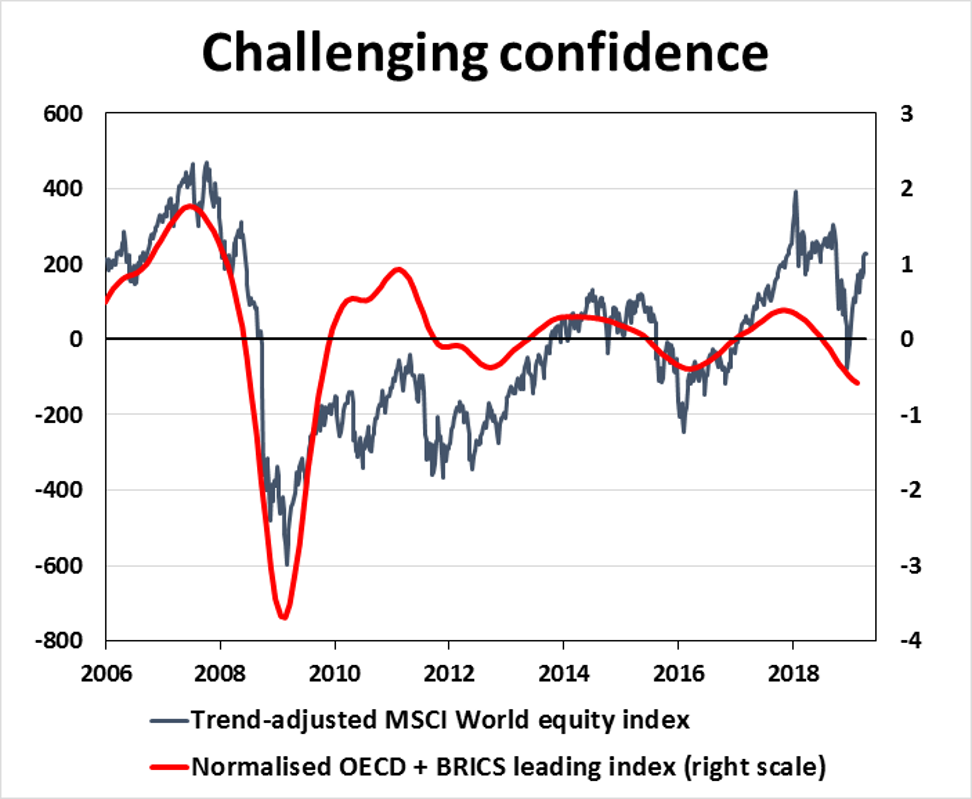
US-China trade talks could seal the deal for investors looking for reasons to be optimists
- After months of depressing data, good news out of China and the US has investors reconsidering their hesitance about stocks. Successful trade talks could lay remaining doubts to rest
It’s the biggest challenge facing global investors on the cusp of a breakthrough to new stock market highs. Who do they believe: the growth optimists who think the world is about to stage a new phase of economic resurrection or the pessimists warning that the global economy is grinding into another slowdown? It’s the battle between risk-on and risk-off, leaving investors caught in the crossfire.
If Beijing and Washington can sink their differences over trade it may just be the tipping point for the rest of the global economy and for financial markets. Trade flows will take time to recover but the boost to global economic confidence should go a long way in convincing investors that sticking to stocks is the best place to be. If the next move in US interest rates is down, then it could be the trigger for unalloyed stock market joy. Markets are primed, ready and waiting for better news.
Global investors are stuck between a rock and a hard place right now: cautious about the risks of slower growth but also driven by a fear of missing out on the rally. The bull market for global stocks has come a long way and may be testing the bounds of relative value. The odds are investors are underweight equities and potentially at risk of a “short squeeze”.
The latest Reuters asset allocation survey shows global funds recently raised their stock weighting and cut their cash buffer as a mark of increased optimism but remain relatively underexposed on risk overall. At the end of March, equity portfolio shares rose to 47.6 per cent from 45.9 per cent in the previous month, but still below the 49.4 per cent average over the last 10 years.
A little good news could go a long way. If the US and China are shrewd enough, between them they can clinch recovery with a trade compromise that convinces investors that the future remains bright.
David Brown is chief executive of New View Economics


